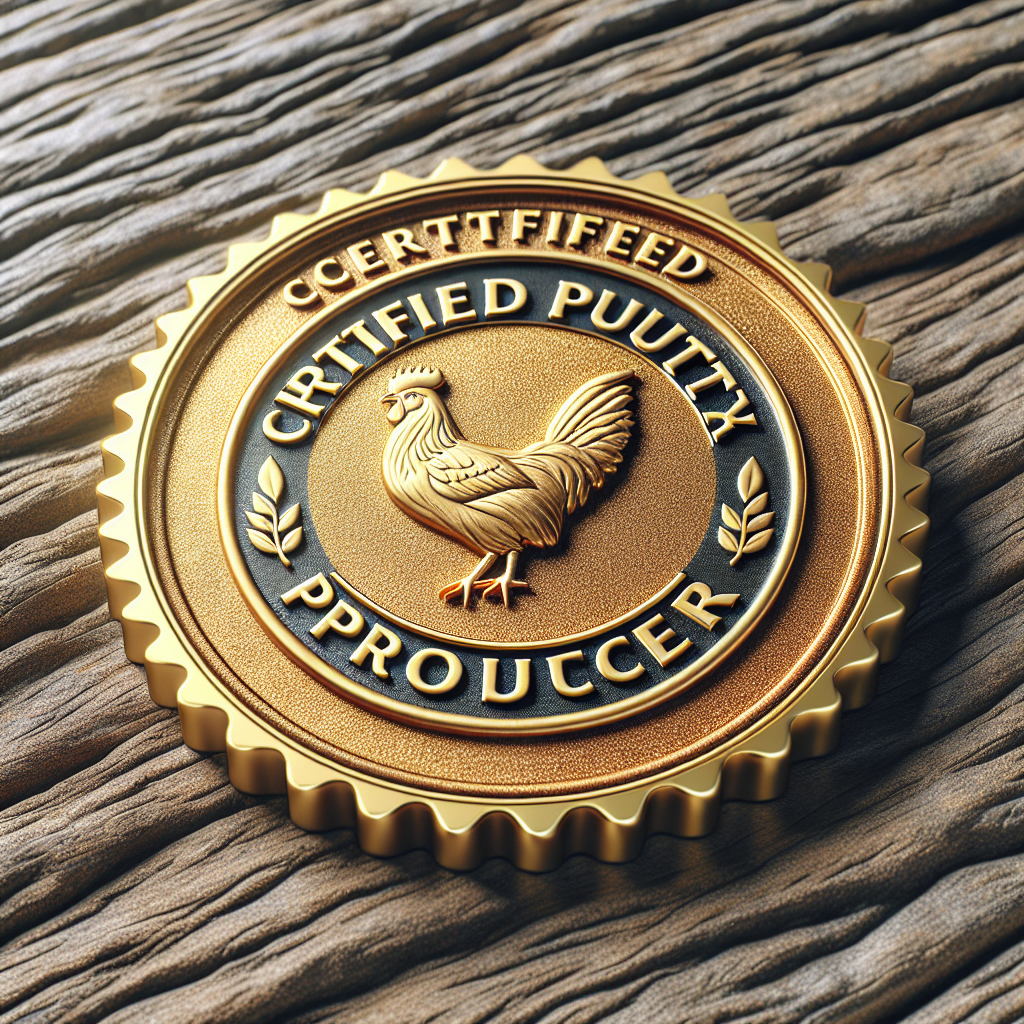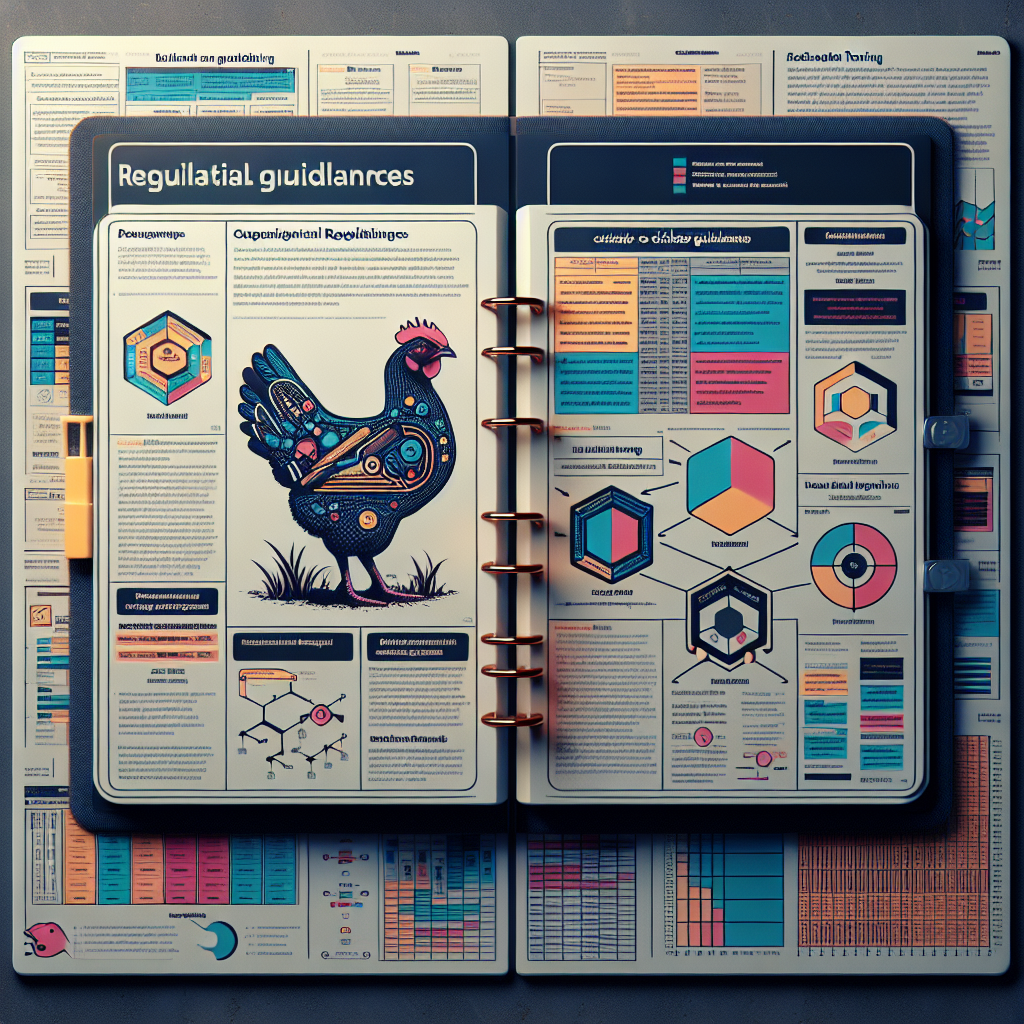Have you ever wondered how the regulations in the poultry industry affect the selling of chicken products, such as eggs and meat? From government mandates to food safety standards, these regulations play a significant role in ensuring the quality and safety of the chicken products we consume. In this article, we will explore the various ways in which regulations impact the selling of chicken products, shedding light on the behind-the-scenes processes that ultimately shape our dining experience. So, grab a cup of coffee and get ready to delve into the fascinating world of chicken product regulations.
Overview of the Chicken Industry
Market Size and Importance of Chicken Products
The chicken industry is a major player in the global food market, with a significant market size and importance. Chicken products, such as eggs and meat, are highly consumed worldwide due to their affordability, versatility, and nutritional value. The demand for chicken products continues to grow as more people recognize the health benefits and convenience of incorporating chicken into their diets.
Key Players in the Chicken Industry
The chicken industry consists of various key players, including chicken producers, processors, distributors, and retailers. Large-scale poultry farms and multinational corporations dominate the industry, benefiting from economies of scale and advanced technology. These companies utilize efficient production and distribution methods to meet the increasing demand for chicken products. However, small-scale producers also contribute to the market, serving niche markets with specialty products and catering to local communities.
Types of Regulations in the Chicken Industry
Food Safety Regulations
Food safety regulations play a vital role in ensuring that chicken products are safe for consumption. These regulations are implemented by government agencies and organizations to prevent foodborne illnesses and maintain high standards of hygiene and sanitation throughout the chicken production process. They encompass various aspects, including handling, storage, processing, and transportation of chicken products.
Animal Welfare Regulations
Animal welfare regulations aim to protect the well-being of chickens throughout their lives in the industry. These regulations focus on ethical treatment, appropriate living conditions, and humane practices during farming, transportation, and slaughter. They promote cage-free and free-range systems, prohibit inhumane practices, and establish guidelines for animal handling and welfare audits.
Labeling and Packaging Regulations
Labeling and packaging regulations ensure that consumers have access to accurate information about chicken products. These regulations require proper labeling of nutritional content, country of origin, and certification claims. They also regulate packaging materials and labeling practices to prevent misleading information and ensure product integrity.
Food Safety Regulations
Government Agencies and Standards
Food safety regulations are enforced by government agencies, such as the Food and Drug Administration (FDA) in the United States. These agencies set standards and guidelines to ensure the safety of chicken products. These standards may include temperature control, storage requirements, and protocols for handling and processing chicken.
Inspections and Audits
To ensure compliance with food safety regulations, regular inspections and audits are conducted by government agencies and independent third-party organizations. These inspections assess the adherence to sanitation and hygiene practices, evaluate the condition of facilities and equipment, and verify proper handling and storage of chicken products.
Sanitation and Hygiene Requirements
Food safety regulations mandate strict sanitation and hygiene requirements within the chicken industry. These requirements include maintaining clean and sanitary facilities, implementing regular cleaning protocols, and providing adequate training to employees regarding hygiene practices. Moreover, regulations also emphasize the importance of proper waste management and prevention of cross-contamination during processing.
Animal Welfare Regulations
Cage-Free and Free-Range Requirements
Animal welfare regulations promote cage-free and free-range systems to improve the living conditions of chickens. These regulations push for the elimination of battery cages and encourage the provision of ample space for chickens to engage in natural behaviors. Cage-free systems allow chickens to move freely within enclosed barns, while free-range systems provide access to outdoor areas during certain periods.
Prohibition of Inhumane Practices
Animal welfare regulations strictly prohibit inhumane practices within the chicken industry. This includes practices such as debeaking, forced molting, and the use of certain growth-promoting substances. The regulations aim to minimize stress and suffering for chickens and ensure their overall well-being throughout their lifecycle.
Transportation and Slaughter Guidelines
Animal welfare regulations also establish guidelines for the transportation and slaughter of chickens. These guidelines ensure that chickens are transported in a safe and humane manner, with provisions for proper ventilation, temperature control, and handling practices. Slaughter guidelines focus on minimizing pain and distress during the slaughter process, requiring the use of humane methods approved by veterinary authorities.
Labeling and Packaging Regulations
Nutritional Labeling
Labeling and packaging regulations require accurate nutritional labeling for chicken products. This information enables consumers to make informed dietary choices and helps individuals with specific dietary needs or restrictions. Regulations require the inclusion of essential nutritional information, such as calories, fat content, protein content, and allergen information, on product labels.
Country of Origin Labeling
Country of origin labeling regulations ensure transparency regarding the origin of chicken products. These regulations require disclosure of the country or countries where chickens were raised and processed. Country of origin labeling enables consumers to support local producers or make informed decisions based on their preferences for specific regions known for high-quality chicken products.
Certification and Organic Labeling
Regulations regarding certification and organic labeling aim to provide consumers with additional information about the quality and production practices of chicken products. Certified labels, such as Animal Welfare Approved or Global Animal Partnership, indicate that the product adheres to certain standards beyond regulatory requirements. Organic labels certify that the product is produced according to organic farming practices, free of certain synthetic chemicals, and conforms to organic livestock welfare standards.
Impact of Regulations on Production Processes
Increased Compliance and Costs
Regulations in the chicken industry often require producers to invest in additional resources and infrastructure to comply with the standards. This may include upgrades to facilities, implementation of stricter control measures, and increased training for employees. Meeting regulatory requirements can result in higher production costs, which may be passed on to consumers.
Altered Farming and Processing Practices
Regulations can drive changes in farming and processing practices within the chicken industry. For example, animal welfare regulations may encourage producers to adopt alternative housing systems, such as cage-free or free-range systems. Similarly, food safety regulations may necessitate the implementation of enhanced sanitation practices, leading to modified processing methods and stricter quality control measures.
Impact of Regulations on Market Access
Export and Import Requirements
Regulations play a significant role in determining the export and import requirements for chicken products. Exporting countries must meet the regulatory standards of the importing countries to ensure food safety and quality. Non-compliance with these requirements can restrict market access and hinder international trade in chicken products.
Harmonization of Standards
Efforts are made to harmonize standards and regulations across different countries and regions to facilitate trade in chicken products. Harmonization aims to establish common requirements and guidelines, simplifying the process for producers and ensuring consistent product quality and safety. This helps reduce trade barriers and encourages international cooperation within the chicken industry.
Trade Barriers and Tariffs
Regulatory differences between countries can create trade barriers and result in the imposition of tariffs or import quotas. Non-tariff barriers, such as divergent labeling or certification requirements, can hinder market access and impact the competitiveness of chicken products. Trade agreements and negotiations often aim to address these barriers and enhance market access for exporters.
Impact on Consumer Confidence
Assurance of Product Safety and Quality
Regulations in the chicken industry provide consumers with assurance regarding the safety and quality of chicken products. Compliance with food safety regulations ensures that products are free from contaminants and pathogens, reducing the risk of foodborne illnesses. Animal welfare regulations indicate that chickens are treated ethically, addressing consumer concerns about the welfare of animals.
Transparency and Trust in the Industry
Regulations encourage transparency and trust in the chicken industry by requiring accurate labeling and certification practices. Clear labeling provides consumers with important information about the nutritional content, origin, and production methods of chicken products. Certification programs and labels help consumers make informed choices and foster trust in the industry’s commitment to meeting regulatory standards.
Challenges Faced by Small-scale Producers
Financial Constraints
Complying with regulations can pose financial challenges for small-scale chicken producers. The costs associated with infrastructure upgrades, training, and certification processes may be burdensome for smaller operations with limited resources. Meeting these requirements can increase production costs and affect the overall competitiveness of small-scale producers.
Compliance Burden
Navigating the complex regulatory landscape can be burdensome for small-scale producers. Understanding and implementing the numerous regulations that apply to the chicken industry can be challenging, particularly for producers with limited access to legal and compliance resources. The compliance burden can divert attention and resources from core business operations.
Competing with Large-scale Producers
The regulatory environment may create an uneven playing field for small-scale producers, who face stiff competition from large-scale producers. Large companies often have the financial capacity and infrastructure to meet regulatory requirements more efficiently. This can make it difficult for small-scale producers to compete, as they may struggle to invest in the necessary upgrades and certifications needed to comply with the regulations.
Future Trends and Outlook
Advancements in Technology
Advancements in technology are expected to have a significant impact on the chicken industry’s regulatory landscape. Automation, data analytics, and traceability technologies can improve compliance monitoring and enhance food safety practices. Additionally, advancements in genetic engineering and breeding techniques may address concerns related to animal welfare, disease resistance, and environmental sustainability.
Shift towards Sustainable Practices
The chicken industry is witnessing a growing emphasis on sustainability and environmental stewardship. Future regulations are likely to promote sustainable farming practices, such as efficient resource utilization, waste management, and reduced carbon footprint. This shift towards sustainability aligns with consumer preferences and addresses growing concerns about the environmental impact of the industry.
Updates in Regulatory Landscape
The regulatory landscape of the chicken industry is constantly evolving to address emerging challenges and issues. Regulations are expected to become more stringent, particularly regarding food safety and animal welfare. Authorities may introduce new guidelines and standards to enhance public health protection, animal welfare, and consumer trust. It is crucial for industry players to stay updated and adapt to the changing regulatory requirements.
In conclusion, regulations have a significant impact on the chicken industry and the selling of chicken products like eggs and meat. Food safety, animal welfare, and labeling regulations ensure that chicken products are safe, ethically produced, and accurately labeled. Compliance with these regulations can affect production processes, market access, and consumer confidence. Small-scale producers face unique challenges in meeting regulatory requirements, while advancements in technology and a shift towards sustainability shape the future of the industry. Overall, regulations play a crucial role in shaping the chicken industry and ensuring the quality and safety of chicken products sold to consumers.




